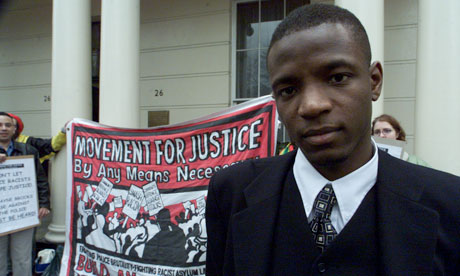
Despite his mistreatment, Duwayne Brooks 'emerged from it all with tremendous dignity'. Photograph: Graham Turner for the Guardian
With the passing of time, it's easy to become complacent about police racism. Nostalgic even. Ah, institutional racism: the eras of TV satires Life on Mars and Ashes to Ashes, when police called women slags and black people wogs. Happy days. Well no, of course not. It's worth reminding ourselves what institutional racism meant and, in some cases, still means today.
Worst of all, institutional racism meant that the officers on the scene could not, or would not, accept that two black boys had been attacked and one of them killed simply because they were black.
There had to be a motive – they had to be bad boys or members of a gang.
And this is when the smears began, and where we saw institutional racism at its most vile.
At its simplest, institutional racism – as defined by Lord Macpherson in his 1999 inquiry into the murder of Stephen Lawrence – means the treatment of people differently simply because of their colour or ethnicity.
The report's findings implied that many officers may have felt they had more in common with Clifford Norris (the gangster father of Stephen's co-murderer David Norris, who was alleged to have paid corrupt police contacts to obstruct the investigation) than with Stephen and his friend Duwayne Brooks. Institutional racism meant that, despite the fact police were given names of five suspects within 24 hours, no arrests were made for two weeks.
There had to be a motive – they had to be bad boys or members of a gang.
And this is when the smears began, and where we saw institutional racism at its most vile.
http://www.guardian.co.uk/commentisfree/2012/jan/06/stephen-lawrence-verdict-police-racism?CMP=twt_gu
